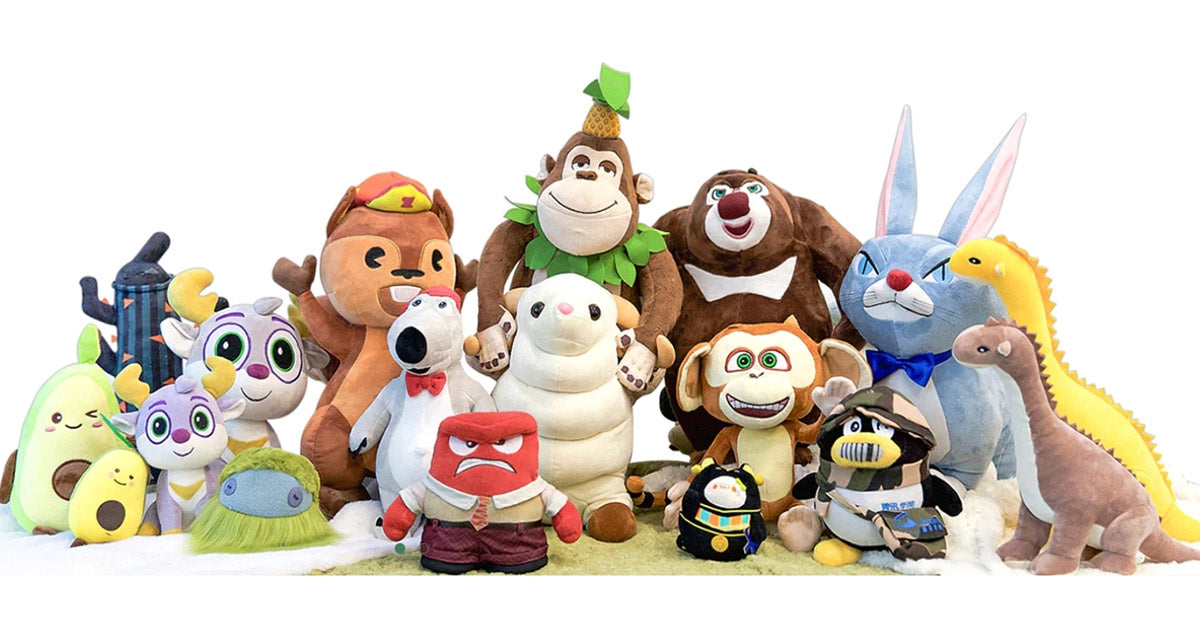Key Trends for Customized Plush Toys
https://www.customimplementer.....com/blogs/news/custo
Customized plush toys have become increasingly popular across various markets, from promotional products to unique gifts. As the demand for personalized and exclusive plush items grows, manufacturers and designers continue to innovate. Below are the key trends shaping the customized plush toy industry today.
1. Eco-Friendly Materials
With sustainability on the minds of consumers, the use of eco-friendly materials has become one of the biggest trends in the plush toy industry. Companies are increasingly turning to organic cotton, recycled polyester, and biodegradable stuffing materials to produce plush toys that are both high-quality and environmentally responsible. This shift not only reduces environmental impact but also appeals to eco-conscious buyers, making it a valuable selling point for brands.
2. Interactive and Smart Plush Toys
Incorporating technology into plush toys is a growing trend, merging traditional cuddly items with modern-day interactive features. These toys often come with embedded electronics such as sound modules, touch sensors, or even Bluetooth connectivity, making them interactive companions for children or promotional tools for brands. Smart plush toys can engage users through storytelling, music, or educational activities, broadening the appeal to both kids and adults.
3. Personalized Plush for Niche Markets
Customization has become a cornerstone in many industries, and plush toys are no exception. Brands and consumers alike are gravitating towards hyper-personalized products that cater to specific tastes and interests. Whether it's plush toys resembling beloved pets, characters from indie video games, or toys with personalized embroidered names and messages, the demand for unique, one-of-a-kind products is skyrocketing. These niche products are often used as gifts, commemoratives, or promotional merchandise for smaller markets.
4. Plush Merchandise for Brands and Influencers
Influencer marketing and brand collaborations have given rise to the use of plush toys as official merchandise. From YouTubers to sports teams, customized plush toys featuring branded logos, mascots, or characters are becoming popular ways to connect with fans. By creating exclusive plush items, influencers and brands can offer their audiences a tangible, collectible product that deepens loyalty and promotes brand visibility.
5. Plush Toys as Promotional Tools
More businesses are using customized plush toys as part of their promotional campaigns. Plush toys make memorable, tactile gifts that help reinforce brand identity and are often used for giveaways, trade shows, or corporate gifts. The ability to create mascots or characters based on a company’s image allows for unique marketing opportunities, with plush toys acting as both a toy and a brand ambassador.
6. Limited-Edition and Collectible Plush
The rise of limited-edition plush toys is attracting collectors and toy enthusiasts. These high-demand items often feature unique designs, premium materials, or special packaging, and are produced in limited quantities. Whether tied to a movie release, pop culture trend, or seasonal event, collectible plush toys create excitement and exclusivity, driving demand among fans and collectors alike.
7. Custom Plush for Therapeutic Use
Plush toys are increasingly being designed for therapeutic purposes. From weighted plush toys that provide comfort for individuals with anxiety to toys specifically created for children with sensory sensitivities, these products offer more than just play. Custom plush toys that incorporate calming features, such as aromatherapy or soft textures, are being embraced by parents, caregivers, and therapists as tools for emotional support.
8. Cultural and Diverse Representation in Plush Toys
There is a growing demand for plush toys that reflect diverse cultures, ethnicities, and communities. Custom plush toys now often include inclusive design elements that resonate with a broader audience, featuring different skin tones, cultural attire, and inclusive narratives. This trend is driven by the desire for more representation in the toy industry, allowing children to see themselves in the toys they play with.
